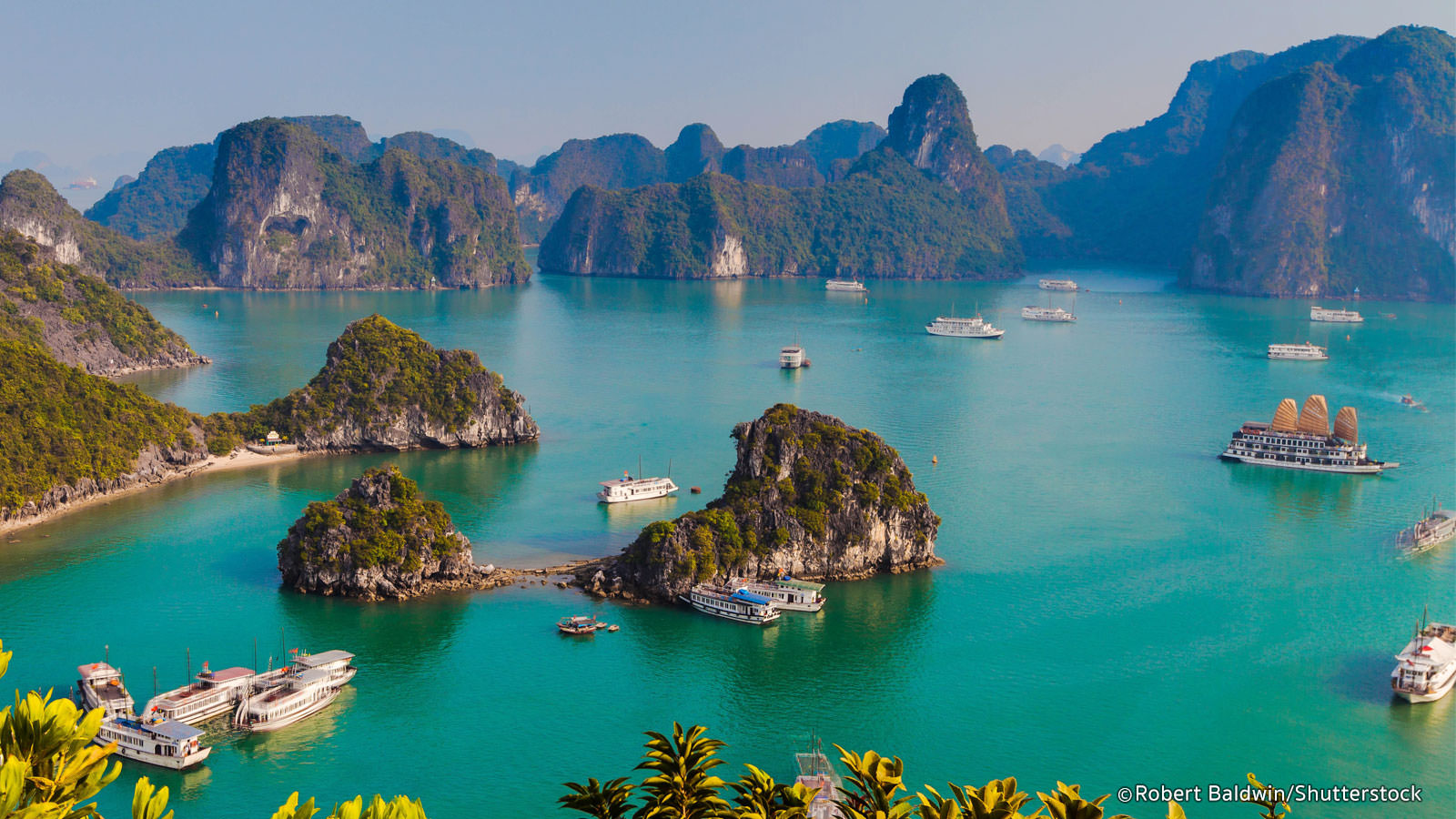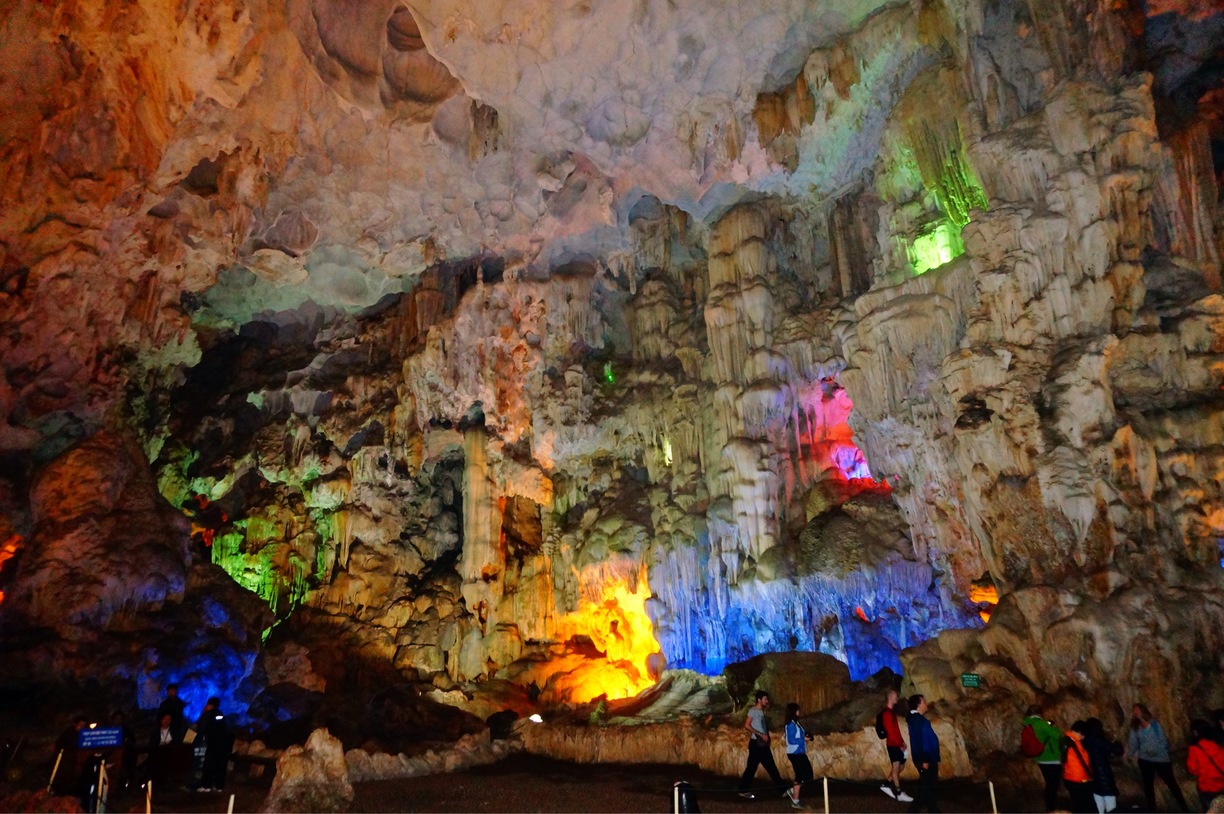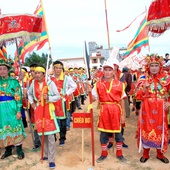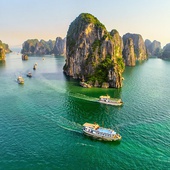Halong Bay - Home Of Major Legends
Located in the heart of the Gulf of Tonkin, approximately 175 kilometers to the east of Hanoi, Ha Long Bay stands out as one of Vietnam's most captivating natural tourist destinations. The breathtaking seascape, characterized by its limestone pillars and intertwined with the myths of the waters, continues to allure both local and international visitors.
The Formation of Ha Long Bay
Understanding the geographic formation of Ha Long Bay provides insight into its stunning landscape. Covering nearly 1,553 square kilometers, the bay is composed of approximately 1,960 small islets, primarily limestone, which have developed over the past 500 million years amidst various environmental changes.
 Photo by @Robert Baldwin
Photo by @Robert Baldwin
Renowned for its picturesque vistas and unique geomorphological features, Ha Long Bay's karst landscape has been shaped by nearly 20 million years of tropical, wet climatic influences. The formation of the bay's topography dates back approximately 250,000 years during a period of instability in the Earth's crust. Initially, the region was submerged beneath a prehistoric ocean, consisting of multiple layers of limestone sediments that gradually eroded over time. This erosion resulted in the creation of mountains interspersed with hundreds of caves visible today.
Furthermore, the region boasts remarkable biodiversity, including tropical evergreen, oceanic, and coastal ecosystems, with 14 endemic plant species and 60 endemic animal species unique to Ha Long Bay.
Enchanted Legends
When viewed from above, Ha Long Bay resembles a vibrant painting, its colors shifting with the changing light throughout the day. As visitors paddle across the waters, they often feel as if they've wandered into a frozen fairyland. Steeped in mythology, Ha Long Bay is indeed a realm of legends.
The name “Hạ Long” translates to "descending dragon," derived from an ancient myth about a family of dragons sent by Ngoc Hoang (the Heavenly King in Eastern culture) to defend the land while the Vietnamese fought against invaders. The dragons, breathing jewels and jade that transformed into islands and islets, formed a protective barrier against the aggressors. Eventually, captivated by the serene beauty of the landscape, the dragon family decided to settle here, giving rise to the name "Hạ Long."
 Photo: asiawaytravel.com
Photo: asiawaytravel.com
The numerous tales behind the names of the various islets and islands invoke a sense of curiosity. Thien Cung Grotto (Heavenly Cave), Dau Go Cave (Cave of Stakes), and Sung Sot Cave (Surprise Cave) all have names steeped in legend and historical significance.
Thien Cung Grotto, for instance, is said to be home to the King of Dragons. According to lore, a couple facing prolonged drought sought the grotto's shelter to plead with the King of Dragons for rain to save their people. Their daughter, a beautiful girl named Cloud (Mây), fell in love with the Prince of Dragons, culminating in a magnificent seven-day wedding attended by various creatures of the land and celestial deities.
 Photo: alamy.com
Photo: alamy.com
Today, visitors often believe that nature has intricately illustrated the majestic scene of a grand feast within the cave. Meanwhile, Dau Go Cave served as the site where the revered General Tran Hung Dao prepared stakes intended to thwart the Chinese invaders at the Bach Dang River during the 13th century. The remains of these stakes still exist within the cave, lending credence to its moniker, "Cave of Stakes." Sung Sot Cave, on the other hand, derived its name from the French colonists' awe when they first encountered its beauty, exclaiming, “Mon adieu! Why, it is a cave!” This spontaneous reaction eventually led to the cave's widely recognized name as "Surprise Cave."
Even today, fishermen residing in the Ha Long Bay area continue to hold steadfast beliefs in the existence of a real “dragon,” akin to Ha Long’s own version of Nessie, lurking beneath the emerald waters.

Quan Lan Festival
Quan Lan Festival is organized from the 10th to the 20th of the 6th month of Lunar Calendar) in QuanLan, Van Don, QuangNinh to commemorate Tran Khanh Du, a famous general of the Tran dynasty

Ba Men Temple Festival
Ba Men Temple is located on a stone island inDau Be Archipelago,which is regarded as the South boundary of HalongSea and Cat Ba (HaiPhong) Sea.

Halong Bay - A Brief History
Get to know the recent history of Halong Bay, one of Vietnam's most loved travel destination.








